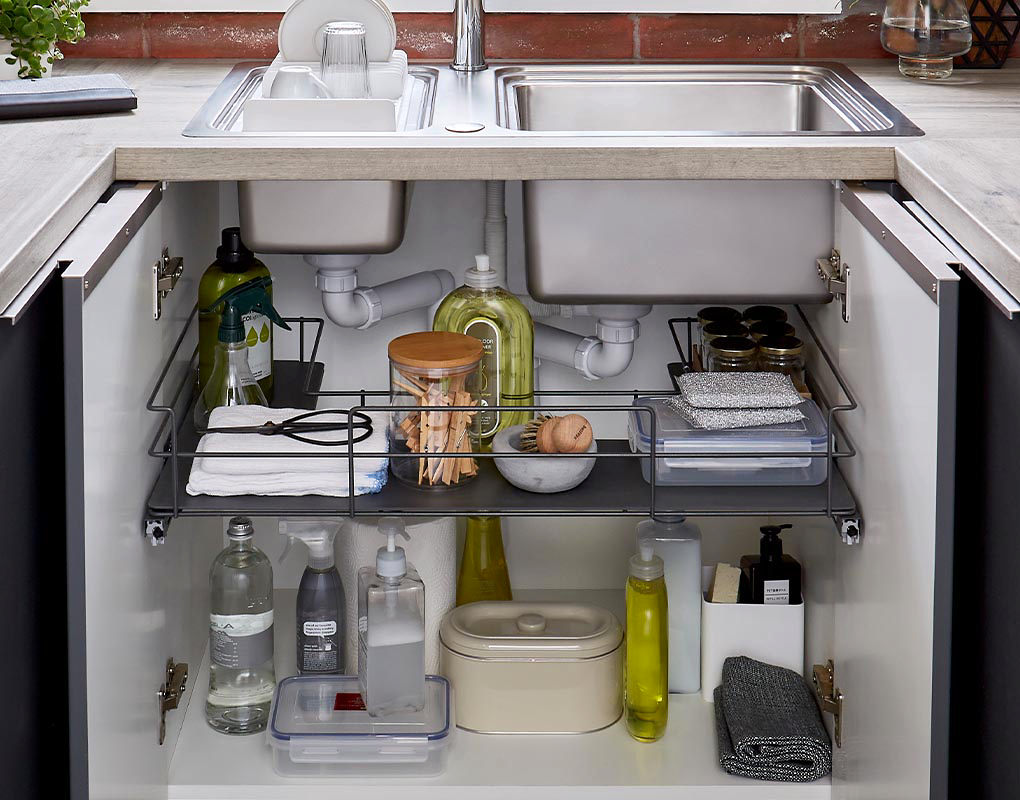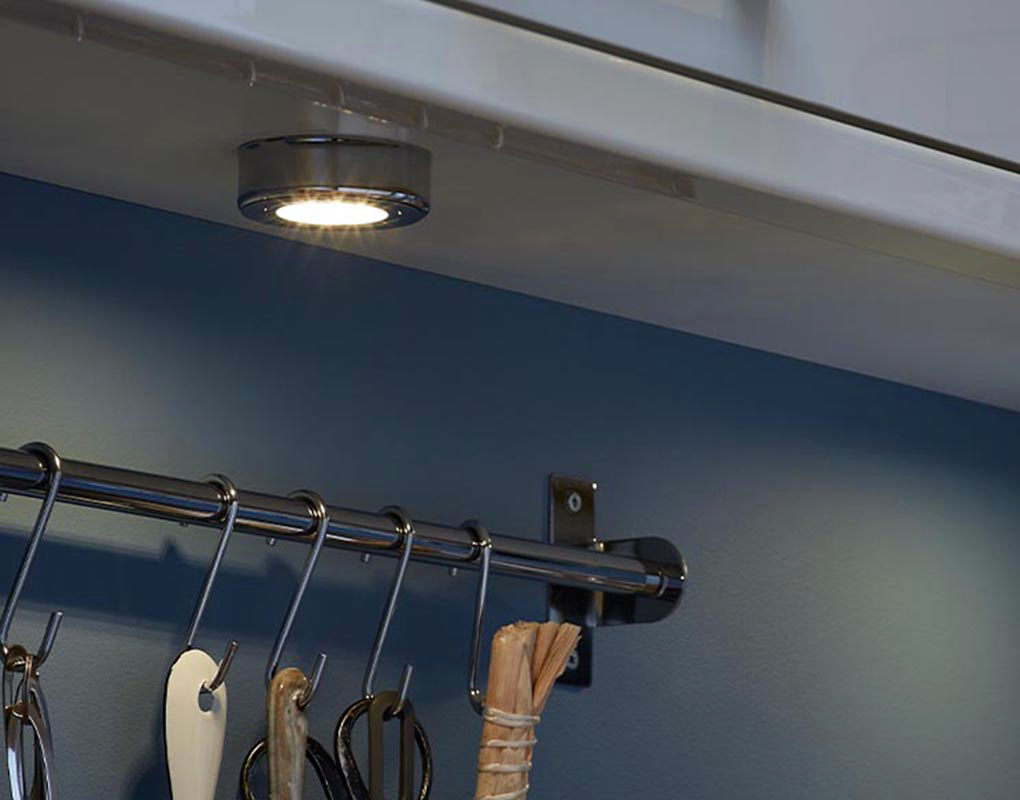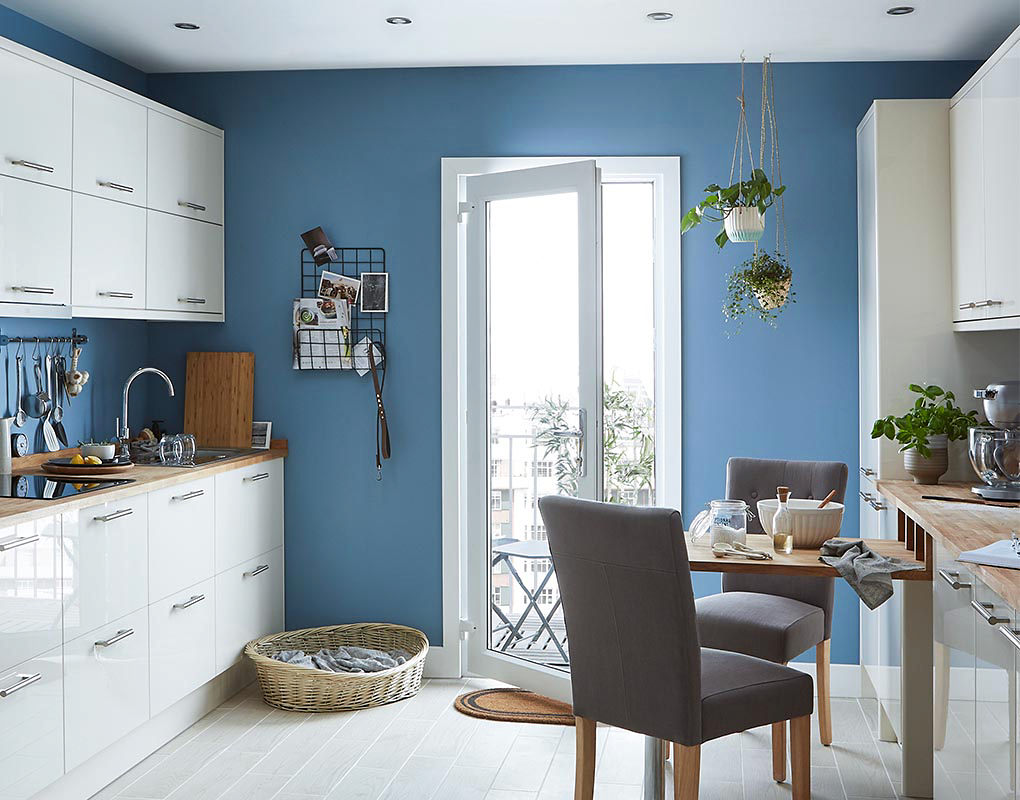How to create a functional work space in your kitchen
Simple ideas to make your life easier
With so much going on in your kitchen, it can be hard to keep everything clean and tidy on the go. But with a little bit of planning, and by making sure you choose the right products, you can make your life a lot easier.
Plumbing
Having a complete reshuffle? The first thing to consider when planning your kitchen is whether you’ll need new pipework. If you do, get this in place before installing worktops and cabinets. It will make life much easier. We recommend getting a plumber involved to get you set up.
Clean worktops
Perhaps not the first thing that springs to mind when planning, but we use our worktops day in day out. Our GoodHome Berberis super-matt laminate worktop is hygienic, heat and scratch resistant, plus it’s easy to install.
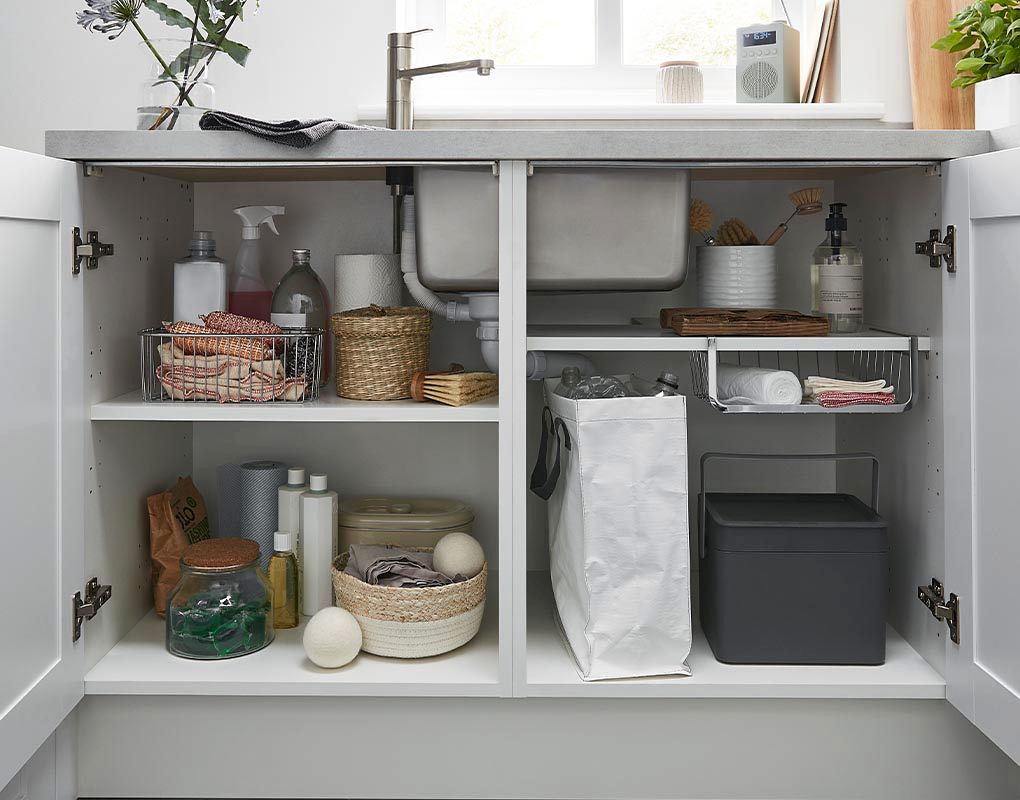
Tidy accessories
To make sure you can clean your worktop with ease, you’ll need to keep it free from clutter. Our Pecel magnetic panels help utilise unused wall space between base and wall cabinets.
Power up
Once your workspace is all set up, it’s time to make sure it’s well-lit with the right lighting in the right place. When hosting guests, you’ll want warming accent lighting to create an atmosphere. And when dicing and chopping you’ll need task lighting that’s bright enough to get the job done. Our Tasuke integrated cabinet lighting can do both. It provides a blanket of bright light over your workspace, and can be controlled with just a wave of the hand.
Discover how to create a functional work space below...
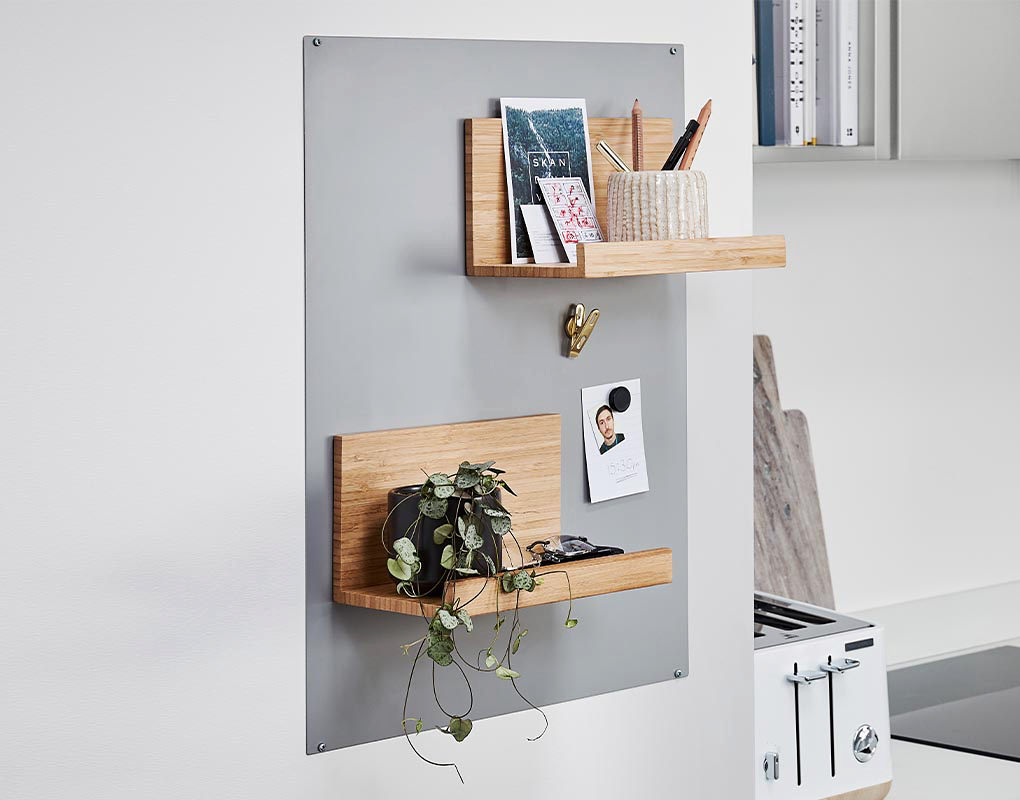
Updating your plumbing
Depending on how big your kitchen renovation is, you might have to update the plumbing. If you plan to keep your sink, washing machine and dishwasher in the same position, then this should be a straight-forward swap. However, if you’re planning on relocating these items you’ll need a plumber to help install new pipe work.
To keep your pipework in one area of your kitchen, make sure your sink is close to appliances that consume water. You can even use the same traps for your sink and washing machine to keep pipes to a minimum. Are you adding a kitchen island with a sink or built-in washing machine or dishwasher? Plumbing and power supplies will need to set up first. It’s best to do this as early as possible in your kitchen project, even before laying the floor. And make sure you hire an electrician or plumber to do this.
How to plan electrical sockets for your kitchen
Most kitchens have at least one or two small appliances that need sockets. So when you’re planning your kitchen it’s important to think about where you’ll install plug sockets.
Consider what items you’ll need to power, and where you’ll use them. These can be near-permanent fixtures like kettles, toasters, or coffee machines.
It’s also worth considering whether you want the sockets to be visible or hidden away. It’s possible to hide sockets just beneath a wall-mounted cabinet or worktop overhang. Install pop-up sockets into worktops to create charging stations for small items, like phones within a drawer. It’s hard to install all these once you’ve fitted your kitchen, so consider it beforehand to make your life easier.
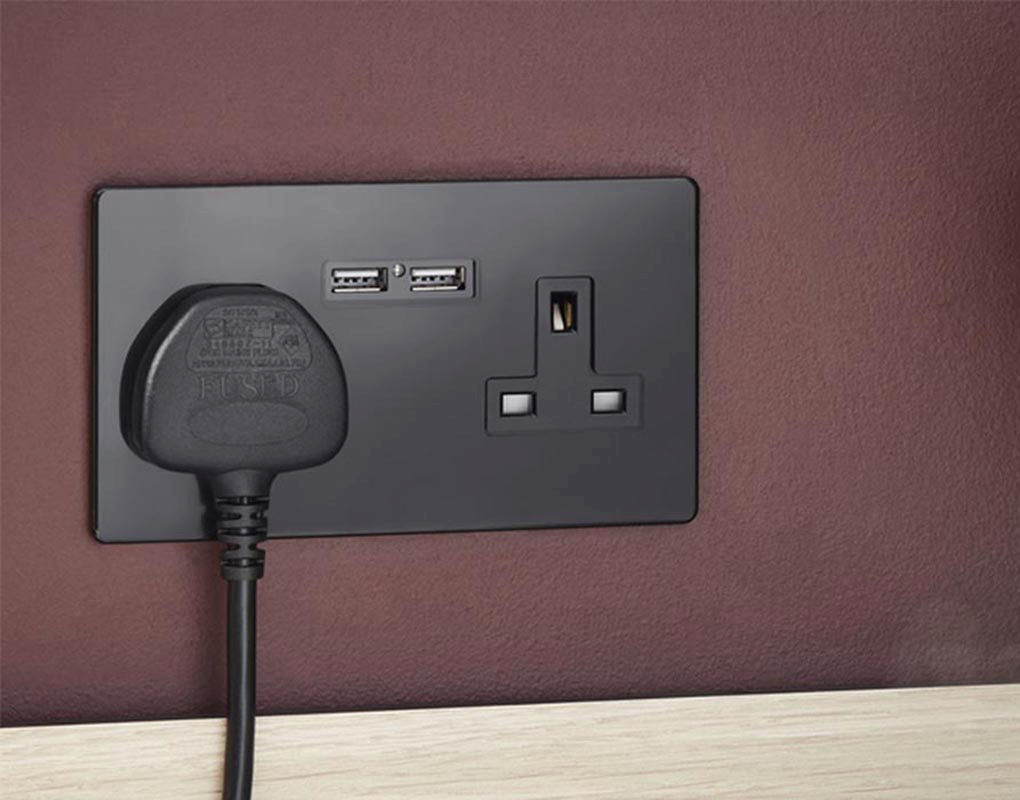
Set the perfect lighting
Accent & task lighting
There are two main types of light to consider in your kitchen: task lighting, and accent lighting. The key difference is their colour temperature. A value that determines what kind of light a bulb will give out. Lower values (like 2700k) will give a warmer, more orange light. Higher values (3500K+) will give a brighter, whiter light.
Accent lighting has a lower, warmer colour temperature. This is great for dining areas, breakfast bars, or anywhere you want people to relax. Meanwhile, task lighting has a higher, brighter colour temperature. Ideal for areas where you need to see what you’re doing, whether that’s washing up, preparing food, or cooking.
Our Tasuke integrated cabinet lighting is capable of multiple colour temperatures. It can switch between colour temperatures with intuitive motion controls. Helping you to effortlessly create different atmospheres.
Planning your lighting
When researching the types of lighting available, consider the following:
- The size and layout of the kitchen
- The amount of natural light available
- What space is available for lighting. Think about ceilings, down lighting beneath cupboards, recessed above / below wall cabinets, etc.
For task lighting over worktops, use bright LED down lighters or light strips on the underside of your cabinets. If you’re fitting directional spotlights, make sure you choose the right beam width. This will determine how much space is lit.
Accent lighting is dependent on how many windows you have, and on how you use your kitchen. If you use your kitchen solely for cooking, it makes sense to stick to task lighting. However, if you often eat and entertain in the kitchen, accent lighting will add ambience.
Do you have a multi-functional kitchen? Consider using dimmable lights, adjustable spotlights, or cabinet lights (like our Tasuke lighting). They will create subtle but effective transitions between task-driven and atmospheric areas. The height of your mood lighting will also influence how intimate or open your kitchen feels.
Utilise natural lighting
Don’t forget to make the most of any natural light your kitchen has to offer. Skylights, French doors, and windows can all help light up your kitchen. Light paint, tiles, worktops and cabinet doors can help bounce extra light around the room. Make the most of natural lighting for a bright, open, and fresh feel.



